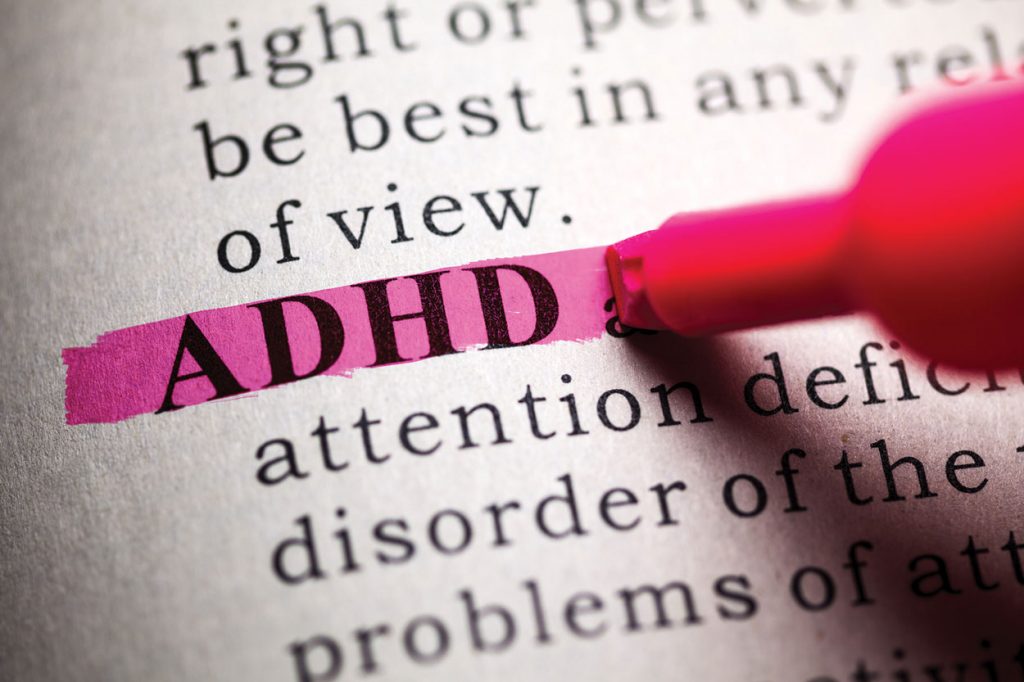
Attention Deficit Hyperactivity Disorder, ADHD is a neurodevelopmental condition. It’s usually first diagnosed at around age 7, especially in children who demonstrate inattention, hyperactivity, impulsivity, emotional dysregulation, and age inappropriate activities. Although I may have demonstrated some of those conditions when younger, I have the ADHD-PI, or “predominantly inattentive” form. I suffered from cognitive disengagement, and was (am!) given to procrastination, hesitation, and forgetfulness. I can lose focus quickly, and sometimes spend a lot of time daydreaming. Conversely, I am sometimes able to to maintain and unusually prolonged focus on a subject that I feel is interesting (“hyperfocus”).
Because I was not particularly hyperactive when growing up, I avoided an ADHD diagnosis until I was in my late ’50s. It explained so much about my previous academic pursuits (wild enthusiasm in the subject material that gradually, or rapidly, gave way to disinterest) as well as associated conditions such as difficulty sleeping. Due to my late-in-life diagnosis, I have relied on behavior and lifestyle changes for management.
ADHD-PI renders writing a particular challenge. If I am caught up in an idea, I feel that I have to write as much as possible before it eludes me. Other times, I can sit and stare at a blank document that I know must be filled with content … and I’m unable to type a single word, no matter how much I know that I must do so. So, here are some of the strategies that I have found to be successful:
- First, I organize as much as possible. Literature to be referenced is organized. No matter what I am writing, I try to create a skeleton outline as quickly as possible. I recognize that the organization may change as I write, but that is usually a matter of changing the order of various elements – so any organization will help me to get started and keep going.
- To aid organization, I make use of graphics. I will make flow charts of major ideas, indicating where significant references fit within the structure of the essay. I insert arrow to highlight key ideas, or areas that require more research.
- The goal of organization (skeleton outline, graphic displays) is to identify small discrete steps. What can you manage?
- To avoid procrastination, I schedule specific writing times. My productive writing time, when there are few interruptions, is 11pm to 1am. If I am writing for school, I will review notes prior to writing. If I am writing for business (technical IT subjects, I frequently change into “work clothes”).
- I start slow … create a skeleton outline of what I am writing. Then add point-form notes. When I feel fully invested in the flow of the writing, then I extend the point-form notes into sentences and paragraphs.
- When I’m blocked, and procrastinating, I have to move myself into a new mental environment. It can be as simple as listening to music or having a shower, or as complex as going to a new place to write. In the past, I have booked hotel rooms in a different city to completely remove myself from one environment, and find a new place to write.
- The hardest step has been to share with people, and ask for help (usually an extension of the due date). I have discovered that sometimes getting the understanding of the recipient is enough to unblock my mind, and allow me to complete a writing task.
- Finally, create rewards. Once I complete I writing challenge, I like to go for a walk, or (better) take my beastie (Augustus) for a walk. Simple, but any opportunity to get away from the screen and participate in the real world can be a wonderful experience
It is important to note that ADHD-PI may make writing difficult, but there are some benefits as well. An ADHD mind is “neurodivergent”, and frequently sees things differently; in fact, there is some evidence that people with ADHD may be more creative than non-ADHD counterparts (See Hoogman et al., 2020). After all, writers who have had, and overcome the potential negative aspects of ADHD include Agatha Christie, George Bernard Shaw, and Jules Verne!
